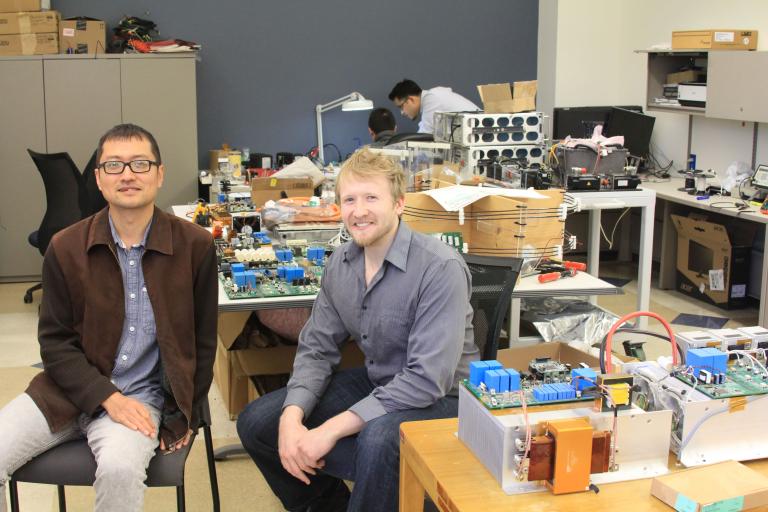
“The charger market is growing rapidly right now, especially in European and Asian markets where electric vehicles are becoming attracting more attention.”
Research being conducted in Kettering University’s Advanced Power Electronics Lab is aimed at helping electric vehicles overcome a significant hurdle in gaining widespread acceptance -- charging time.
Dr. Kevin Bai, associate professor of Electrical and Computer Engineering, and his team of researchers are working with Derindere Motorlu Araclar (DMA), a Turkish automotive company based in Istanbul that is focused on developing electric vehicle integration. The company is helping Turkey reach its goal of producing a 100 percent electric car with their original vehicle design, developed with advanced technology to help build the future electric vehicle industry.
“We are collaborating with DMA on development of a 24-kilowatt charger,” Bai said. “This will allow a vehicle to finish charging much faster than the presently existing 3.3kW or 6.6kW on-board charger, which would significantly reduce charging time and acceptance of EVs to customers.”
The partnership with Kettering began when Bai met Andrew Weiss ‘03, Engineering Director at DMA Auto, at an SAE World Congress event in 2014.
“High charging rate, cost-effectiveness and high reliability are the key specs for the charger development,” Bai said. “The charger market is growing rapidly right now, especially in European and Asian markets where electric vehicles are becoming attracting more attention.”
The electric car market in Turkey has been growing thanks to the high cost of fossil fuels and conventional vehicle taxation structure. Bai is working with a team that includes one research engineer, one postdoctoral fellow and one graduate student. They’re working on a three-phase 380-volt, 24-kilowatt high-efficiency charger that they hope to have completed in the fall.
“We will deliver the charger working prototype to DMA by October,” Bai said.
Bai has previously done research for Magna E-Car to develop a 10-kilowatt charger, which allowed for approximately one hour charging time. The Magna charger was based on a 220 voltage reading while this DMA charger will be lifted to 380V. Even though the power will be lifted from 10- to 24-kilowatts, the efficiency should remain at approximately 95 percent.
“This charger will be higher powered, thereby having a higher charging rate,” Bai said. “Meanwhile the high efficiency indicates low power loss thereby little heatsink and higher power density.”
Bai noted that although battery technology is still a bottleneck for widespread acceptance of electric vehicles, a breakthrough is likely in the near future and companies are preparing for it.
“The success of such collaboration will be a win-win scenario” Bai said. “On one hand, Kettering power electronics team will gain more automotive industrial experience out of this project. On the other hand, DMA is expected to own a high-efficiency charger with lower cost, which makes their EVs more competitive.”